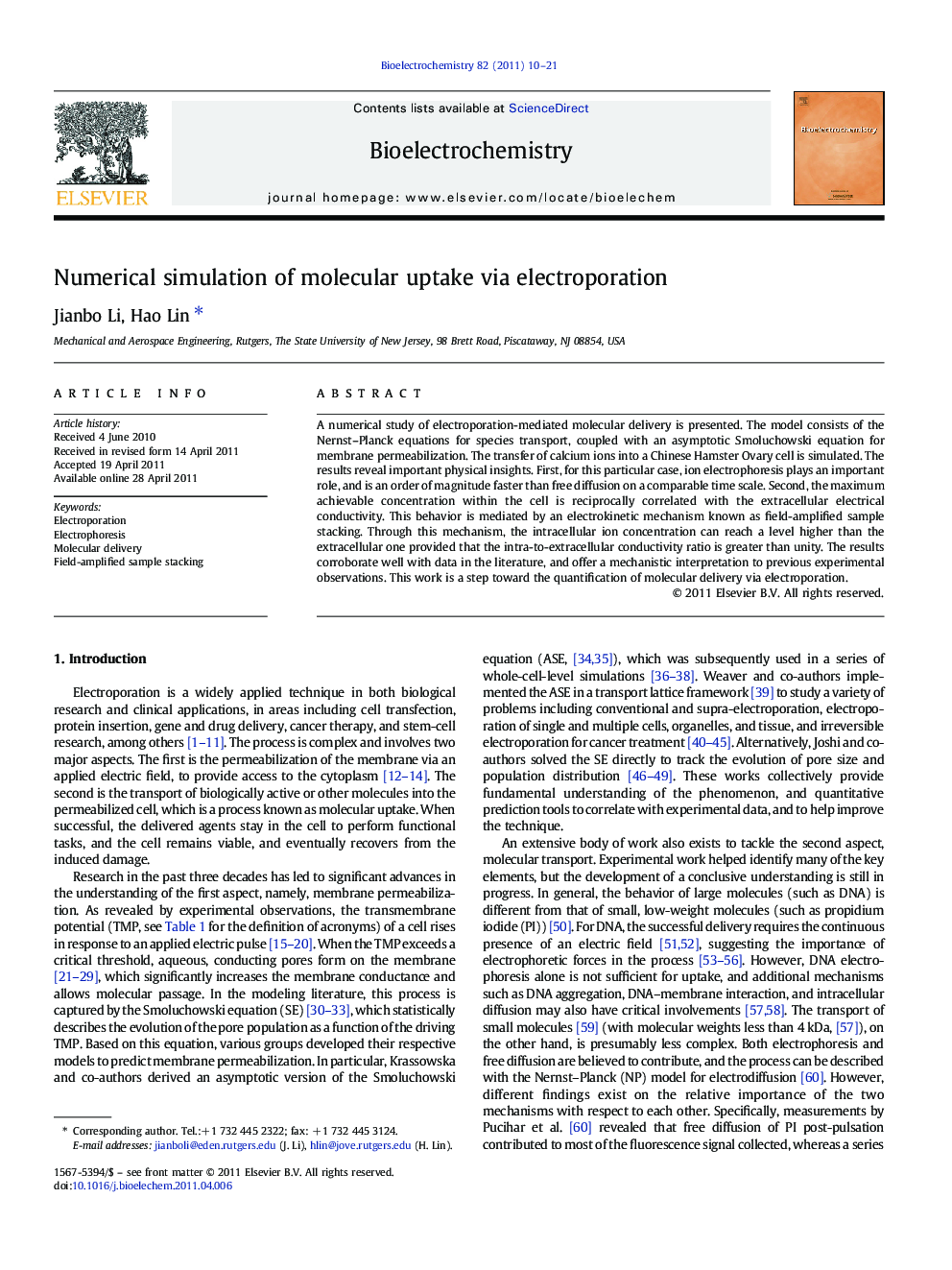| Article ID | Journal | Published Year | Pages | File Type |
|---|---|---|---|---|
| 1274604 | Bioelectrochemistry | 2011 | 12 Pages |
A numerical study of electroporation-mediated molecular delivery is presented. The model consists of the Nernst–Planck equations for species transport, coupled with an asymptotic Smoluchowski equation for membrane permeabilization. The transfer of calcium ions into a Chinese Hamster Ovary cell is simulated. The results reveal important physical insights. First, for this particular case, ion electrophoresis plays an important role, and is an order of magnitude faster than free diffusion on a comparable time scale. Second, the maximum achievable concentration within the cell is reciprocally correlated with the extracellular electrical conductivity. This behavior is mediated by an electrokinetic mechanism known as field-amplified sample stacking. Through this mechanism, the intracellular ion concentration can reach a level higher than the extracellular one provided that the intra-to-extracellular conductivity ratio is greater than unity. The results corroborate well with data in the literature, and offer a mechanistic interpretation to previous experimental observations. This work is a step toward the quantification of molecular delivery via electroporation.
► We present a spatiotemporal model for molecular delivery with electroporation. ► Electrophoresis plays an important role in the delivery of small molecules. ► Field-amplified sample stacking governs the achievable concentrations. ► The concentration is reciprocally correlated with the extracellular conductivity.
